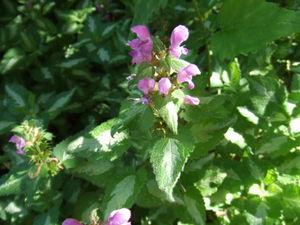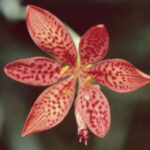Monkey grass, or Liriope, is a low-maintenance, grass-like ground cover or edging plant that offers it all. It’s easy to grow and care for. It needs little or no fertilizing. It’s extremely hardy. It grows under various conditions and in many soils. It can be grown in sun or shade. It’s heat and drought tolerant. It’s rarely affected by pest or disease problems, and it can also perform a number of uses in the landscape.
Whether you know it by Liriope, monkey grass, lilyturf, or its kissing cousin mondo grass, this evergreen plant can provide year-round interest and coverage with its grassy foliage, spiky grape hyacinth-like blooms, and dark berries. As diverse as the names are in this plant, so are the various forms. Clump-forming types, like L. muscari, are the most commonly used varieties in the landscape. This one makes a great edging plant for beds, borders, and walkways. You can even stick it in containers. Its cousin, also referred to as monkey grass, but mainly recognized as mondo grass (Ophiopogon japonicus) is a good choice for shadier areas. This clumping variety has smaller, darker foliage and looks grassier in appearance than the Lirope types.
There are also variegated forms of monkey grass for even more interest, such as L. muscari ‘Variegata’ with attractively striped green and white foliage. Then there is the creeping form, L. spicata. While this one is great for use on slopes or naturalized areas, including use as a lawn substitute, if it’s placed in the wrong area, this aggressive monkey grass can quickly become a nuisance. It may even try to choke out other nearby plants.
One of the things I like best about monkey grass, other than its adaptability, it its hardiness. With exception to their susceptibility to crown rot in overly moist or humid conditions, monkey grass is difficult to hurt. In fact, it’s quite tolerant of neglect, bouncing back readily without any problems. It’s also easy to propagate through division anytime-spring through fall. In fact, if you have an area you’d like to edge, dividing an established clump or two is a quick and cost-effective way to go.
Just this spring, I inherited a couple large clumps from my mother. She was simply needing to make space and I just happened to be looking for something to edge an existing bed following the removal of some old shrubs. She had just what I needed-monkey grass. Even after sitting out of the ground for a week (she was originally going to toss them), they still thrived. I needed only to divide them, stick them in the ground, water them, and cut them back (which encourages new growth). Within no time they were flourishing in their new location and have already doubled in size. Some are even blooming. All this in an area where I had previous difficulty getting anything else to grow-part of it is dry shade, part is hot sun. Needless to say, I couldn’t be happier.
Sources: personal experience
Perennials for Every Purpose (Larry Hodgson), Liriope pp. 400-401







